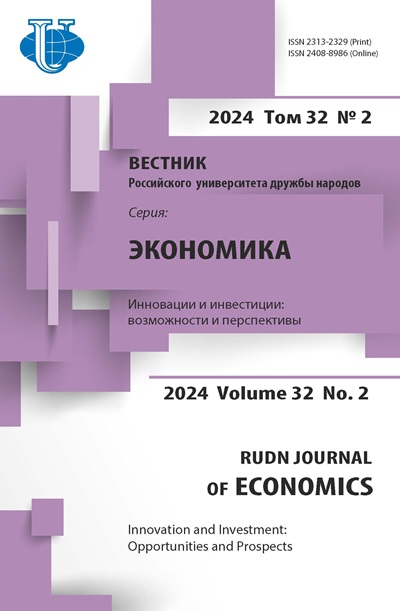NEW FORMS OF UNIVERSITY COOPERATION: INTERNATIONAL NETWORKS OF UNIVERSITIES
- Authors: Oganesyan AA1
-
Affiliations:
- Russian Academy of National Economy and Public Administration (RANEPA)
- Issue: Vol 25, No 3 (2017)
- Pages: 354-366
- Section: Articles
- URL: https://journals.rudn.ru/economics/article/view/17767
- DOI: https://doi.org/10.22363/2313-2329-2017-25-3-354-366
Cite item
Full Text
Abstract
In the context of the internationalization of education, universities have a key role in forming specialists who meet the growing need and requirements of the new digital and innovative economy. In this regard, new forms of interaction between higher education organizations on the international level - university networks - are emerging and developing. The article presents the results of research of information on international university networks. Thus, 33 international networks of universities, including 13 associations, 12 networks, 8 consortiums were selected according to specific requirements (international, functioning for at least 2 years, the existence of cooperation agreements between the network structures, the presence of more than 4 structures), examined and analyzed. The analysis of networks by various criteria has been carried out. The conclusions about the efficiency of functioning of university networks are presented in the article.
About the authors
A A Oganesyan
Russian Academy of National Economy and Public Administration (RANEPA)
Author for correspondence.
Email: ani.oganesyan.a@gmail.com
Oganesyan A.A., Cand. Econ. Sci., PhD in Management sciences, leading specialist of the Russian- French center for education and consulting of the Institute of Public service and management of the Russian Academy of National Economy and Public Administration.
Vernadsky Prospekt, 82-84, Moscow, Russia, 119571References
- Beerkens H.J.J.G. (2004) Global opportunities and institutional embeddedness: Higher education consortia in Europe and Southeast Asia. University of Twente. 354 p.
- Grau F.X., Hall B., Tandon R. (2017). Higher education in the world 6. Towards a socially responsible university: Balancing the global with the local. URL: https://www.researchgate.net/ publication/314840823_Higher_education_in_the_World_6_Towards_a_Socially_Responsible_ University_Balancing_the_Global_with_the_Local (accessed: 22.06.2017).
- Lupanov V. N. (2009) Setevaya model upravleniya universitetom v usloviyah globalizatsii i regionalizatsii obrazovaniya. Universitetskoe upravlenie: praktika i analiz. No. 2. S. 63—68 (In Russ)
- Makoveeva V.V. (2012) Setevoe vzaimodeystvie klyuchevoy faktor razvitiya integratsii obrazovaniya, nauki i biznesa. Vestn. Tom. gos. un-ta. No. 354. S. 163—166. (In Russ)
- Melikyan A.V. (2014) Osnovnyie harakteristiki mezhdunarodnyih setey universitetov. Voprosyi obrazovaniya. No. 3. S. 100—117. (In Russ)
- Neretina E.A. (2013) Setevoe vzaimodeystvie — osnova dinamichnogo razvitiya vuzov [Networking as the basis of flexible dynamic development of universities]. Vyisshee obrazovanie v Rossii. No. 4. S. 128—133. (In Russ)
- Soglashenie o konsortsiume po sozdaniyu Setevogo universiteta Sodruzhestva Nezavisimyih Gosudarstv. URL: http://cis.rudn.ru/doc/1685 (accessed: 15.06.2017 ) (In Russ)
- What is Horizon 2020? URL: https://ec.europa.eu/programmes/horizon2020/en/what-horizon-2020 (accessed: 04.06.2017).















